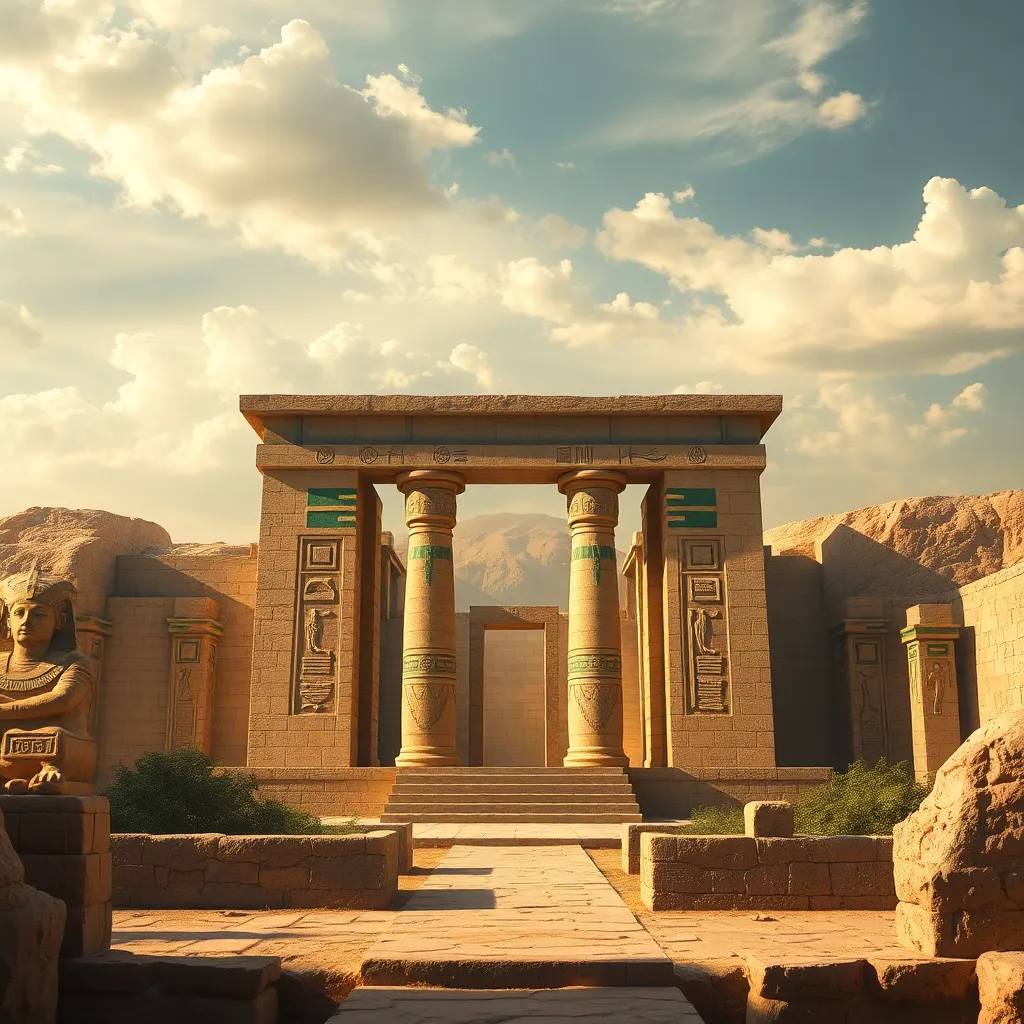The Role of Temples in Aten Worship
I. Introduction
Aten worship emerged as a unique and transformative religious practice in ancient Egypt during the 14th century BCE. Central to this worship was the sun disk, Aten, which was revered as the singular god above all others. The temples dedicated to Aten played a crucial role in the religious practices of the time, serving not only as places of worship but also as centers of community and power. This article aims to explore the significance of temples in Aten worship, shedding light on their historical context, architectural features, rituals, and socio-political roles.
II. Historical Context of Aten Worship
The worship of Aten began to gain prominence during the reign of Pharaoh Akhenaten, who is often credited with the establishment of a form of monotheism centered around this solar deity. Prior to this, ancient Egyptian religion was characterized by a rich pantheon of gods and goddesses, with multiple temples dedicated to various deities.
- Emergence of Aten as a deity: Aten was initially associated with the sun god Ra, but during Akhenaten’s reign, he was promoted to the status of the one true god.
- Akhenaten’s reforms and the establishment of Aten worship: Akhenaten instituted significant religious reforms, moving the capital to Akhetaten (modern-day Amarna) and building temples dedicated to Aten.
- Transition from traditional polytheism to monotheism: This shift marked a radical departure from centuries of established religious practices, emphasizing a singular devotion to Aten.
III. Architectural Features of Aten Temples
The temples constructed for Aten worship were distinctively different from traditional Egyptian temples. These structures were designed to reflect the unique characteristics of Aten as a deity of the sun.
- Design elements unique to Aten temples: Aten temples often featured open-air sanctuaries that facilitated direct exposure to sunlight, symbolizing the divine presence of the solar disk.
- Comparison with traditional Egyptian temples: Unlike the dark, enclosed spaces of conventional temples dedicated to other gods, Aten temples embraced light and air, emphasizing the purity and warmth of the sun.
- Significance of open-air spaces and sunlight: The architectural choice to include expansive courtyards allowed worshippers to gather in the light, fostering a communal experience of reverence.
IV. Rituals and Ceremonies in Aten Temples
The rituals and ceremonies conducted within Aten temples were uniquely tailored to honor the sun disk. Worship practices centered around the themes of light, life, and creation.
- Description of worship practices specific to Aten: Rituals included offerings of bread, beer, and flowers, which were presented to the solar disk as tokens of gratitude and devotion.
- Role of priests in conducting rituals: The priests, who were responsible for maintaining the temple and performing rituals, played a pivotal role in mediating between the people and Aten.
- Importance of festivals and public ceremonies: Festivals celebrating the sun and its life-giving properties were integral to Aten worship, often involving the entire community in joyous celebrations.
V. Symbolism of Temples in Aten Worship
Temples dedicated to Aten held deep symbolic meaning, serving as more than just physical structures; they represented the very essence of the solar deity.
- Temples as representations of the solar disk: The architectural layout and open designs of these temples symbolized the rays of the sun, creating a direct connection between the divine and the earthly.
- The significance of light and its relation to Aten: Light was viewed as a manifestation of Aten’s power, illuminating the world and sustaining life.
- Temples as communal spaces for worship and celebration: These structures served as gathering places for worshippers, fostering a sense of community in the shared experience of devotion.
VI. The Socio-Political Role of Aten Temples
Beyond their religious significance, Aten temples played a vital role in the socio-political landscape of ancient Egypt.
- Temples as centers of power and influence: The temples were not only religious sites but also centers of economic power, often controlling vast lands and resources.
- The relationship between the clergy and the pharaoh: The priests of Aten were closely aligned with Akhenaten, reinforcing his position as the divine ruler and ensuring the temple’s influence over the populace.
- Temples as a means of promoting Akhenaten’s ideology: Through the temples, Akhenaten disseminated his beliefs and reforms, solidifying the worship of Aten as central to the identity of the state.
VII. Decline of Aten Temples and Worship
Following the death of Akhenaten, the worship of Aten and the temples dedicated to him faced significant decline and transformation.
- Factors leading to the decline post-Akhenaten: The return to traditional polytheistic practices was swift, as subsequent rulers sought to restore the old religious order.
- The return to traditional worship practices: The temples of Aten were often repurposed, and the worship of other gods was reinstated, erasing the monotheistic legacy of Akhenaten.
- Archaeological evidence and the fate of Aten temples: Many temples fell into disrepair and were eventually abandoned, with archaeological excavations revealing the remnants of this once-prominent worship.
VIII. Conclusion
The temples dedicated to Aten worship were significant in the religious, social, and political life of ancient Egypt. They represented a radical shift in religious thought, emphasizing the worship of a singular deity and the importance of sunlight as a divine force.
In reflecting on the impact of Aten worship, it is clear that it left a lasting legacy on Egyptian religion, prompting discussions about monotheism and the nature of divinity in a previously polytheistic culture. The story of Aten temples is a testament to the complexities of faith, power, and community in ancient Egypt.
In conclusion, while Aten worship may have been short-lived, its temples remain a fascinating chapter in the history of ancient Egyptian religion, symbolizing both the heights of spiritual innovation and the eventual return to traditional beliefs.




